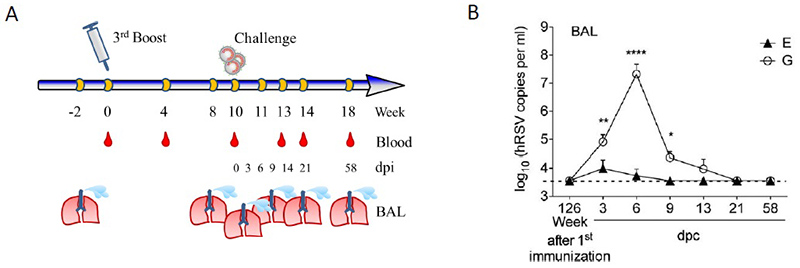Species
Mouse, other species on request
Fields of application
Infections with viruses targeting the respiratory tract are widely analyzed in BALB/c mice. Therefore the animals were infected intranasally with viruses like the human Respiratory Syncytial Virus or different strains of Influenza viruses. After 2 days of viral challenge animals develop in dependence of the virus used different clinical symptoms.
Viral load and immunopathology is measured by state-of-the-art technologies.
The models can be used for the following fields of application:
- Influence of immune response after viral infection
- Vaccine development
- Therapeutic / prophylactic efficacy of antiviral / immunmodulatory agents
Endpoints / outcome parameter
- Viral load in lung tissue and BALF (ex vivo)
- Assessment of clinical symptoms after viral challenge (in vivo)
- Immune cells in blood and BALF (bronchoalveolar lavage fluid)
- Binding and neutralizing antibody titer (ex vivo)
- Airway remodelling (infiltration of different cell types ex vivo)
- Cytokine levels in spleen and BALF (ex vivo)
Readout parameter
- Quantitative RT-PCR
- Flow cytometry
- ELISA / CBA (cytometric bead array)
- Histology / Cytology (various classical histological stains)
- Immunohistochemistry
- Imaging: BLI, CT, MRT
Quality management and validation
- Controls
- Blinded induction
- Blinded data collection and analysis
- Randomisation
- Allocation concealment
- Biometric Expertise
- Internal quality management
References
Tenbusch M, Grunwald T, Niezold T, Storcksdieck Genannt Bonsmann M, Hannaman D, Norley S, Überla K. Codon-optimization of the hemagglutinin gene from the novel swine origin H1N1 influenza virus has differential effects on CD4(+) T-cell responses and immune effector mechanisms following DNA electroporation in mice. Vaccine. 2010 Apr 26.
Stab V, Nitsche S, Niezold T, Storcksdieck Genannt Bonsmann M, Wiechers A, Tippler B, Hannaman D, Ehrhardt C, Überla K, Grunwald T*, Tenbusch M*. Protective efficacy and immunogenicity of a combinatory DNA vaccine against Influenza A Virus and the Respiratory Syncytial Virus. PLoS One. 2013 Aug 14;8(8):e72217
Lai D, Odimegwu D, Esimone C, Grunwald T, Proksch P. Phenolic compounds with in vitro activity against respiratory syncytial virus from the Nigerian lichen Ramalina farinacea. Planta Med. 2013 Oct;79(15):1440-6.
Grunwald T*, Tenbusch M*, Schulte R, Raue K, Wolf H, Hannaman D, de Swart R, Überla K, Stahl-Hennig C. Novel vaccine regimen elicits strong airway immune responses and control of respiratory syncytial virus in nonhuman primates. J Virol. 2014 Apr 88.
*Contributed equally.
